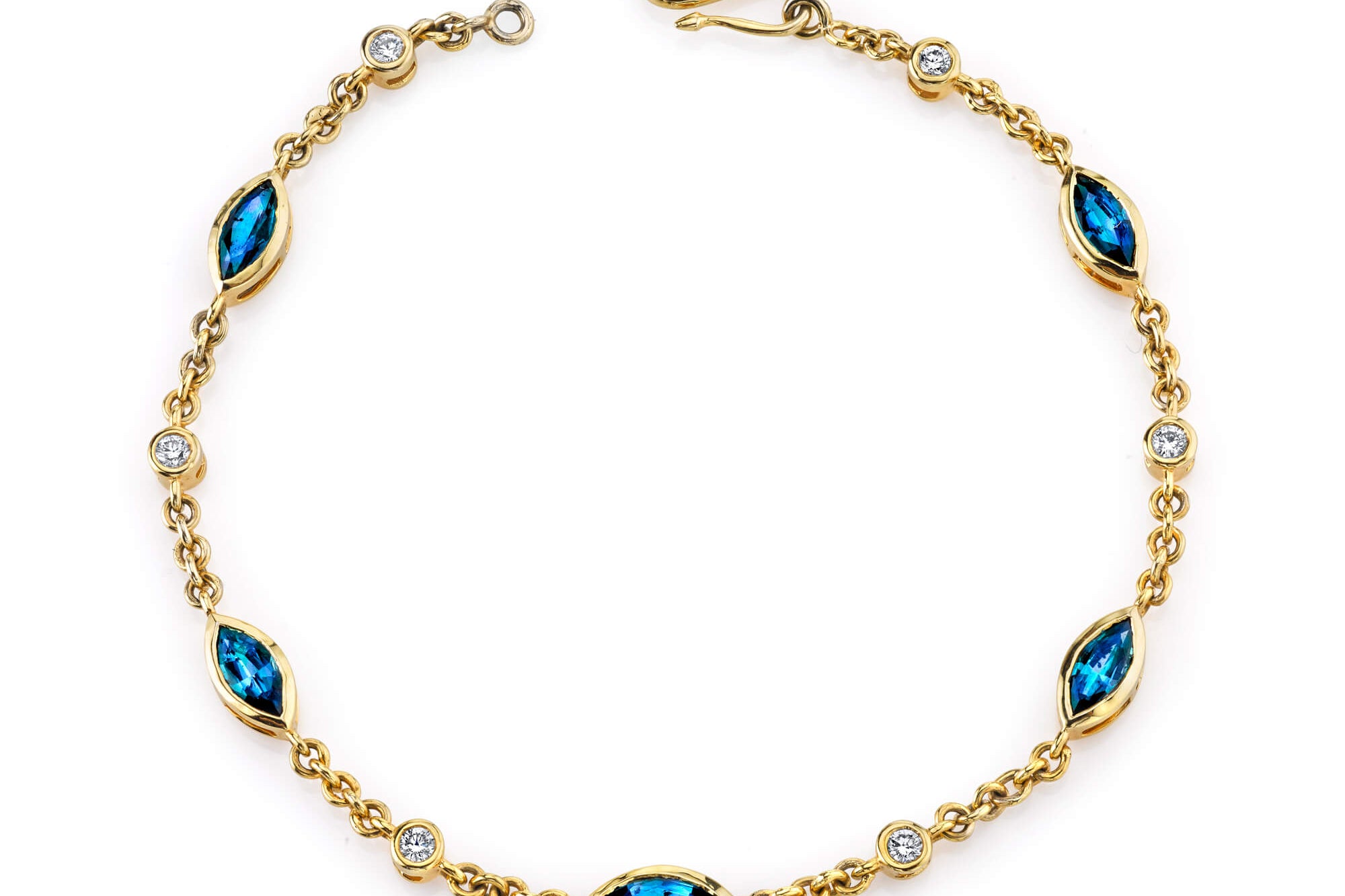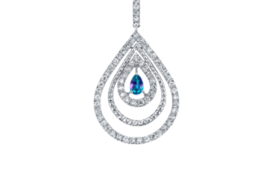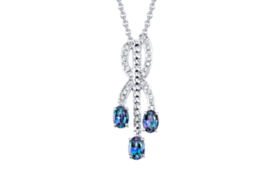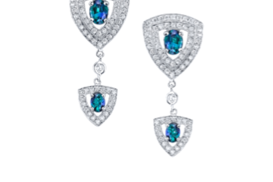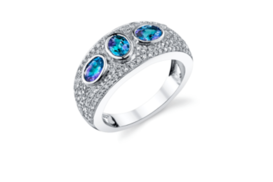June Birthstone: A Comprehensive Guide on June Birthstone
Table of Contents
- About June Birthstones
- History of June Birthstones
- Zodiacal | Astronomical Connection
- What Are The Three June Birthstones?
- Alexandrite
- Properties
- Factors Affecting Value
- Occurrence and Mining
- Natural vs Synthetic
- Alexandrite vs Diamonds
- Alexandrite vs Amethyst
- Pearl
- Moonstone
- Natural vs Synthetic
- Applications of June Birthstones
Do you know what is the birthstone for June? Did you know there exist different gemstones for different months? June-born people are lucky because they get to choose between the three June birthstones- Pearl, Moonstone, and Alexandrite. Welcome to the comprehensive guide on the June birthstones.
At first glance, gemstones may seem like beautifully shining pieces of treasure. While that is true, these precious stones also hold much more significance than being a sign of opulence and beauty. For example, several gemstones have been associated with the different months of the year since ancient times. Gemstones have piqued the interest of people for years with their mystical allure and have often been associated with stories, secrets, attributes, and lore. Birthstones have long since been used to determine a person’s character and quality by studying signs, stars, zodiac, and astrology.
Whether you believe in their powers and myths or find them amusing, there is no denying that each birthstone is beautiful and unique. Having your very own stone designated through your birth month has always poked at the curiosity of people. At the very least, wearing gemstones as jewelry seems to be an enjoyable experience.
Have you wondered what is the June birthstone? Do you know what color is a June birthstone? Learn the history, astrological connection, properties, occurrence, and everything else there is to know about the June birthstones.
History of June Birthstone
The gemstones that have been associated with a particular birth month, each signifying a unique meaning, character, and historical significance, are commonly known as birthstones. The popularity of birthstones can be traced back to ancient times when societies believed that these stones hold magical powers like luck, healing properties, and bringing prosperity.
Western Birthstones
You can find first records of the origin of the concept of birthstone and their connection to a higher meaning or power in the Book of Exodus of the Bible. The biblical Breastplate held twelve precious gemstones, representing the twelve tribes of Israel. The religious garment had specific symbolism concerning the different tribes, highlighting their uniqueness with gems set in four rows of three. Carnelian, chrysolite, and beryl formed the first row, while the second used jacinth, agate, and amethyst. The third and last row had topaz, onyx, and jasper as the gemstones, although it is hard to guess what stones were used for.
In 1st century A.D., Scholar Flavius Josephus, followed by St. Jerome from the fifth century A.D., believed that the twelve gems welded in the Breastplate of Aaron held an association with the twelve months of the year and the twelve zodiac signs. The theory that these special gems were connected to astrological alignment and the change in the days or months brought miracles was proposed. This connection encouraged the use of gemstones among Christians, establishing a tradition that lasted for centuries. People began collecting and wearing all twelve stones as adornments like belts, bracelets, and necklaces.
By the 8th and 9th centuries, this tradition evolved into a practice where people would collect the different stones but wear a single stone in only a given month. This stemmed from the eastern idea that the stone’s powers that blessed the wearer would be heightened within that period. This also tracks the surge in trade between the east and west during that period. The tradition to wear one stone for the month they were born, i.e., their birth month, is a relatively modern tradition, originating in either Germany or Poland. Even though the origin of birthstones has religious roots, it wasn’t until the 18th century that stones were assigned to particular birth months. This laid the foundation of the current birthstone trend we are familiar with today.

Image source: https://encrypted-tbn0.gstatic.com/images?q=tbn:ANd9GcTdWNscfuP-_JQX-2i-yFbOsoNIYVc36ripMMKy YNymocRTq0nP1b8r-vIbrQzX0OEP_C8&usqp=CAU
Eastern Traditions
Eastern cultures recognize similar gemstones associated with birth, as the western countries did in older times. However, different lists of stones have been uncovered, influenced by the religious scriptures, culture, and beliefs. This includes guides from the Indus Valley Civilization, Tibetan beliefs, and East Asian traditions.
The lists discovered from the times of the Indus Valley Civilization were heavily based on the Vedas and observations made by sadhus studying astrology.
They believed the gemstones were connected to birth months and were also related to astrology, celestial bodies, and alignment of stars, and synergies and energies. Although the birth month and other factors often decided what stone would impart the most beneficial attribute to an individual.
A 5th-century Hindu text, the Ratna Pariksha, records the relationship of gemstones and deities, celestial bodies, and days and months. In Hinduism, nine gemstones or the Navratna (nine gems in Sanskrit) are associated with the Navgraha, or the nine celestial forces, including the planets, sun, and moon. An astrological chart is prepared at birth, and specific gemstones are recommended to be worn to ward off the potential negative effect based on the placements of these forces in the sky.
A number of these stones were thought to be related to the twelve lunisolar months of the Hindu calendar. Ayurveda, the medicinal script of the Vedas, has illustrated texts that claim the gemstones possess healing properties, and several of these have been paired with the twelve months. These lists are dated back to 1500 B.C.E. Although similar to the later established western practices, these stones were not limited to the birth month. Rather, different stones were worn at different times, depending upon the astrological concerns.
In Tibetan culture, a list designating twelve birthstones for the twelve months exists. These gemstones, much like those of the west and other eastern parts, were believed to hold metaphysical powers and were used as protective talismans. In addition, the stones were used as blessings and bearers of good fortune. This ‘mystical’ list dates back to 1000 C.E. or older.
In Siam or Mueang Thai, now known as Thailand, people wore some stones and colored fabrics on different days of the week. This list has existed at least since the end of the 19th century.
The Chinese culture has been known to give a unique value to gemstones displaying optical phenomena. Seven of these gemstones were paired the seven days of the week, and a list called the ‘phenomenal birthstones’ was formed, documented at the beginning of the 20th century.
Throughout history and the different beliefs and cultures, different gemstones have been allotted to the different months. While some overlap, others differ. For June, we have-
| Traditional | Pearl, Moonstone, or Alexandrite |
| Historical | Cat’s Eye, Turquoise, or Agate |
| British | Pearl or Moonstone |
| Hindu | Pearl |
Modern Birthstones
Even though the practice of wearing birthstones based on months began in the 1500s in Germany and Poland, an agreed-upon guide decided which stone represented which month had not been formed. The meaning of a gemstone could change from region to region depending upon their myths, cultures, and people. Over time, people began composing poems and songs, forming lists and stories about the different gemstones and their properties. These lores spread across countries, overlapping or contradicting each other.
The assigned stones for a month have changed since ancient times. Earlier, color was the most crucial factor, and other properties could not distinguish between the different gemstones due to the lack of technology and knowledge.
Even though the occurrence of birthstones was already an internationally rooted century-long practice, there were many disparities between the proposed lists and beliefs. Finally, after several clashes and disagreements, in 1912, the National Association of Jewelers met to birth a standardized list of American birthstones. This list was built by combining various customs revolving around the birthstones and considering what gemstones would be practical to sell and promote in large quantities.
Although traditionally each month was assigned a single gemstone, now some months, including June, have multiple birthstones. Since then, the list remains unchanged for the most part, with only a few modifications. The first change was made in 1952 by the Jewelry Industry Council of America when alexandrite was added to June, citrine to November, pink tourmaline to October, and zircon to December. In 2002, Tanzanite was included in December's stones, and in 2016, spinel became the birthstone for August.
Today there are three lists of birthstones for each month- ancient, traditional, and modern. The ancient list has been passed down and recognized for thousands of years, while the conventional gemstone guide has been in play for the past 500 years. The modern list of birthstones has only been formulated and used for the past 100 years or so.
Modern Birthstone List
| Month | Birthstone |
| January | Garnet |
| February | Amethyst |
| March | Aquamarine |
| April | Diamond |
| May | Emerald |
| June | Alexandrite |
| July | Ruby |
| August | Peridot or Spinel |
| September | Sapphire |
| October | Tourmaline |
| November | Golden Topaz or Citrine |
| December | Blue Zircon, Blue Topaz, or Tanzanite |
Zodiacal | Astronomical Connection
Have you ever wondered what is the birthstone for June 10th? Or what is the birthstone for June 27th? Why are they different?
Birthstones are most commonly associated with the twelve months of the year. However, they have been connected to the twelve zodiac signs, days of the week, planets, and other celestial bodies too. The astrological version of the monthly birthstones, the Birthstone Zodiac signs, is another popular alternative to picking your birthstone.
The birthstones assigned through astrology follow the twelve zodiacs. Each zodiac sign is ruled by one of the planets in the solar system. Hence, each planet rules over one gemstone according to its color. The twelve zodiac signs are- Aries, Taurus, Gemini, Cancer, Leo, Virgo, Libra, Scorpio, Sagittarius, Capricorn, Aquarius, and Pisces.
Also known as Astral stones (originating from astrology), the birthstones have been an essential part of various cultural and religious beliefs since the start of human civilization, or at least since the beginning of astrology. The fundamental assumption of the Astral stones is that an individual’s astrological sign is linked to one or more gemstones on Earth. Some think that these Astral stones carry the ability to awaken hidden powers. Others believe that the stone’s energy or property can affect the healing and protective abilities, benefit the mind, body, and soul, bring good luck and fortune, etc.
The most accepted version of the Zodiac birthstones and how they work is their role in affecting the energies of the planets each gemstone falls under. The zodiac signs are used in astrological calculations to predict an individual's qualities, personality, relationships, and other affairs. The twelve zodiacs represent the ‘houses’ or divisions of heaven, charted by an astrologer. The signs tell the placement of the twelve celestial bodies, like the sun and moon, during the time of birth.
Each sign influences the people born between specific dates, and predictions are made depending upon the position of the celestial bodies in the houses. The sign of the zodiac changes on the 22nd of every calendar month. Since a single planet rules every zodiac, each planet is responsible for a gemstone based on its colors. The energies of each planet are deterred by a classical element to which the sign belongs (fire, earth, air, or water). The gemstones assigned to each sign can influence positive and negative energies through an individual's personality traits and characteristics.
Since the zodiac and Gregorian calendars tend to overlap, many similarities can be noted in the listing of gemstones to different months. However, according to the zodiac signs, at least two AStral stones fall in the same month since the signs change on the 22nd. So, even if two people are June-born, they may have different birthstones according to the Zodiac listing.
Why do the calendar months and zodiac months differ?
The tradition of birthstones can be traced back to the Romans and the Julian calendar in 46 BC. At this point, there were still 365 days and each zodiac sign aligned with each month.
By the late 16th century, the Gregorian calendar succeeded the Julian calendar. However, it has to take in the inaccuracies caused by the occurrence of leap years over 1700 years. This led to the removal of 10 days from the original Julian calendar. A few years later, Europe made the necessary changes; however, Russia did not remove 13 days until 1922. Ultimately, the original alignment of the zodiac signs and their gemstones was not following the contemporary version we use today.
Similar to the Zodiac birthstones, gemstones have also been connected to the days of the week according to birth.
| Zodiac Sign | Birth Date | Birthstone |
| Gemini | 21st May to 21st June | Pearl, Agate |
| Cancer | 22nd June to 22nd July | Ruby, Moonstone, Emerald, Pearl |
What Are The Three June Birthstones?
While most months have only one gemstone, June is among the few that have three. The three June birthstones are-
- Alexandrite
- Pearl
- Moonstone

Image source: https://n2h4v7n8.stackpathcdn.com/wp-content/uploads/2020/06/June-Birthstone-Infographic.jpg
Alexandrite
Alexandrite is the most modern birthstone for June. The most significant aspect of the gemstone is its color-changing feature- ‘Emerald by day, ruby by night.’ Alexandrite is transparent yellow-green to greenish-blue stone under normal circumstances. But, under polarized light ( example- sunlight), it displays the most remarkable color change in the world, thanks to a phenomenon known as pleochroism. As a result, it explodes into a range of different colors- from red to dark purple or orange-depending upon the direction of light and the viewing angle.
Alexandrite is the most valued form of the mineral chrysoberyl that is responsible for the color-changing property. Birthstones showing a vivid green to bluish-green in daylight or fluorescent light and a deep red to purplish hue in incandescent light is the most prized Alexandrite.
The rare exhibit of colors that Alexandrite shows is often compared to an analogy of love. Presenting itself in different forms or shades, you can always tell when you have the real alexandrite. The gift of Alexandrite is a beautiful way to express your love to a cherished one.
It is very little to no mythology or lore associated with Alexandrite despite its unique properties. Although it has been around for a long time, it was discovered more recently compared to other gemstones.
The modern gemstone was found in the Ural Mountains, among the Russian emerald mines. Some claim that it was discovered in 1834, the day that the future Russian Czar Alexander II came of age. Supposedly, the name ‘Alexandrite’ was given in his honor.

Properties
The chrysoberyl ‘chameleon’ stone’s color-changing ability is its most prominent and astounding feature. Alexandrite appears to be either sea-foam green to bluish in daylight but purplish to red/pink in incandescent light. This is due to the difference in absorption and reflection of the light resulting in a change in the spectrum of color it projects.
Despite having ‘beryl’ in the name and often having the same color as emerald, this chrysoberyl is not related to the green birthstone. Chrysoberyl crystals contain small amounts of aluminum. For the crystal to be alexandrite, some aluminum ions must be replaced by chromium, resulting in light absorption in the yellow spectrum.
Additionally, the Alexandrite crystals are trichroic i.e., having three distinct optical directions. This permits different colors to be seen from different angles, explaining how the same gem can exhibit multiple colors under the same light.
Factors Affecting Value
Alexandrite is sought after for its chameleon-like behavior. Consequently, certain shades are preferred over others. Since the chromium ions are responsible for the color-changing attribute, the level of this ion that is balanced between ruby and emerald affects the value of the Alexandrite crystals. Another factor is the distinctness of the color change.
When specific forms of long, thin inclusions are formed parallel to each other, they show another phenomenon called chatoyancy, also known as the cat’s-eye effect. The cat’s-eye Alexandrite is among the most sought-after June birthstones.

A rare, gem quality Cat's Eye Alexandrite from Tanzania.
Occurrence and Mining
This June birthstone can only be found in a select few places in the world. The main sources of Alexandrite are the mines in India, Madagascar, Tanzania, and Sri Lanka.

The Hematita mine in Brazil

The Hematita mine in Brazil
Natural vs Synthetic
Several synthetic Alexandrite can be found easily. Although testing and consulting an expert for accuracy should always be considered, there are some things to look out for when spotting a fake stone.
The size and clarity of the Alexandrite become essential clues in determining its formation. Large gemstones are extremely rare in nature, making it unlikely to find one in a local pawn shop. Synthetic Alexandrite is usually corundum laced with vanadium that causes the color change. Although pretty in its way, the alexandrite-like sapphire only shows a purple-mauve color and never any green.
Alexandrite vs Diamonds
Diamonds, the birthstone for April, have always been one of the most prestigious and expensive gemstones people have fawned over. Alexandrite, on the other hand, is on the rise in terms of popularity. The two stones share some similar characteristics but are quite different. The greatest difference can be noted in color. While Alexandrite is known to change colors, diamonds are always crystal-clear. Diamond is the hardest material found on earth, measuring 10 on the Mohs scale of hardness while Alexandrite rates at 8.5. Diamonds with few to no inclusions are highly valued whereas the value of Alexandrite rises with the number of inclusions which induces its light-chanigng property.
Alexandrite vs Amethyst
Amethyst is the birthstone of February and has been around for a long time. In historical books, records of Amethyst being used for a multitude of purposes besides as a precious gemstone in jewelry designing. The stone was fashioned into vessels to contain beverages in ancient Greek and Rome. It was believed the wearer could avoid getting drunk. As a gemstone, it has stark contrasts with Alexandrite which is a modern June birthstone. Alexandrite is colorful, ranging from red to green, whereas Amethyst is violet. Alexandrite is harder, more durable, and highly valued than Amethyst. Chemically, Alexandrite is a variety of the mineral chrysoberyl but Amethyst is a naturally occurring quartz.
Pearl

Image Source- https://unsplash.com/photos/09bKHOZ29us
Pearl is one of the most admired gemstones since ancient times, perhaps even before becoming the June birthstone. The name originates from the Latin word for leg, ‘Perna.’ This refers to the leg-of-mutton shape of an open mollusk shell.
Ancient Greeks first thought pearls to be the tears of the gods, while Hindus believe these beads to be tears of the moon. Pearls are unlike any other gemstone as it is a product of a living organism rather than the pressurized minerals and rocks. This June gemstone varies significantly in color, shape, and size. The authentic pearls range from white to black Tahitian gems and rare pink Conch pearls. For their beauty and value, pearls became a sign of status, prosperity, and affection among the rich. Tudor England was known as the Pearl Age because the gem was so popular among the nobility.
The gem is often believed to create a feeling of calm and a sense of balance, providing emotional and mental healing. Pearls are also associated with sentiments like loyalty, faithfulness, modesty, and purity.
Properties
Pearls have been known to impart a calming effect on the mind and body. Other notable properties and uses have been to treat ailments of the digestive tract, maintaining strong bones, and brightening the skin. In Atharvaveda, pearls were said to bestow long life and prosperity, while Arab physicians used pearl powder to improve eyesight, control nervous tremors, and ease depression.
Physically, pearls are very fragile gemstones. On the Mohs Hardness Scale, they measure only 2.5 to 4 and can easily sustain damage. This includes corrosives from mild acid to even sweat. They are also sensitive to heat.
Fine pearls have a reflective luster, making them appear creamy white with an iridescent sheen casting colorful hues.
Occurrence and Mining
Actual pearl-bearing mollusks have become extremely rare. So now, cultured pearls are widely used in jewelry making. Pearls are usually found in China, Australia, the Philippines, and Indonesia.
Pearl farms are always located far from cities and towns as pearl-bearing mollusks cannot survive in polluted waters. Therefore, saltwater culture pearls are very popular. Akoya pearl farms are generally found in Japan and China, along the southern coasts of Guangdong and Guangxi provinces. South Sea farms can be found on the northern coast of Australia. Rich black Tahitian pearls are cultures in the Gambier Islands and the Tuamotu Archipelago.

Image source: https://kj1bcdn.b-cdn.net/media/36887/pearl-oyster.jpg?format=webp&width=1080&upscale=false
Factors affecting value
Natural pearls that can qualify gemstone quality only occur in 1 in 70000 mollusks. Technically, any mollusk can produce pearls, but only a few can form gem-quality ones. Since these authentic pearls are scarce and expensive, cultured pearls are grown on farms by stimulating host mollusk to secrete nacre solution that builds pearl layers. These are less expensive.
While natural pearls take 6 months to 2 years to form, cultured pearls have an injected nucleus which triggers nacre secretion. This allows pearls to have a suitable size, shape, and quality to develop much sooner.
Natural pearls take between 6-months to 2-years to form inside the host mollusk. Cultured pearls have a nucleus injected into the shell, which forces a reaction from the mollusk, which coats the invading item with nacre. This allows a pearl of suitable size and quality to become harvestable much sooner.
Each step in the pearl-making process changes the final product. The factors affecting the value of pearls also include the type of oyster, water cleanliness, and the location it is formed.
Treatment and Care
As pearls are soft gems, they require special care. They should be stored separately from other gemstones and metal jewelry to avoid any scratching. Plastic bags can release chemicals that can damage the surface of pearls. Avoid contact with perfume, hair products, and cosmetics. Instead, use a soft, damp cloth to clean pearl jewelry.
Moonstone
Moonstone is the third June birthstone famous for its adularescence- the light appears to stream across the gemstone, giving it a special glow. Pliny, the Roman historian, gave the name ‘moonstone’ to relate the gemstone’s shimmery look with the shift in the moon's phases.
The most valued moonstones exhibit a blue sheen when placed against a white background. The gemstone has long since been found in myths, being associated with Roman and Greek lunar deities and Hindu mythology, claiming it to be made of solidified moonbeams. Moonstone represents love, passion, and fertility and is the bearer of great luck. According to poems and stories, Moonstone brings magical and beautiful dreams. Some cultures used it as a cure for insomnia and sleepwalking. Also known as ‘ The Traveller’s Stone’, this June birthstone was used as a protective charm for people traveling in the night.
Chemically, Moonstone is a form of the mineral feldspar that produces a pearl-like luster when light penetrates the stone. The mineral layers reflect this light within the crystal. As a result, Moonstone often appears to be a milky white or gray color with a white or silvery glow. This shine resembles the glow of the moon, giving it its name. Pink, orange, near-colorless, blue, or multicolored moonstones are also found in nature.

Image source: https://geology.com/gemstones/ moonstone/colored-moonstone.jpg
Properties
Moonstone crystals are formed when two types of feldspar minerals are fused. Combining these two separate elements with different densities and physical properties impart the unique light dispersal property of moonstone. After fusion, when these minerals cool down, a distinct layer is formed in the crystal stacks.
Factors Affecting Value
The June birthstone is prized for its adularescence ability. The more transparent and colorful the crystal appears, the greater the intensity of the blue glow and, thus, the higher the gem's value.
When buyers choose moonstones, importance is given to three factors- body color, the color of the gem, and orientation of the sheen.
Occurrence and Mining
Moonstone is widely found in several places across the globe. This includes Sri Lanka, India, Australia, Myanmar, Madagascar, and the United States.
Wicker baskets are dipped into a strategically placed, shallow moonstone mine, and wet clay is collected. The clay is swished and washed around in the baskets, leaving behind the crude moonstones. These are then polished by expert artisans and then fashioned into jewelry.

Image source-https://geology.com/gemstones/moonstone/ blue-flash-moonstone-rough.jpg

Image source: https://www.gia.edu/sites/Satellite?blobcol=urldata&blobkey=id&blobtable= MungoBlobs&blobwhere= 1495883319951&ssbinary=true
Treatment and Care
The one weakness of this beautiful June gemstone has its relatively low hardness. Measuring just 6 on the Mohs scale, moonstones are prone to cracks and cleaving. Jewelry must be designed considering this to ensure the durability of the gem. Cleaning should be done using warm, soapy water with a soft brush.
Natural vs Synthetic
Natural moonstones can be easily identified through their layers. A separation between the distinct layers should be visible in the crystals of genuine moonstones. A characteristic blue lustrous gleam and a flickering or irritation inside the gem can be seen in the natural June gemstones.
Applications of June Birthstones
Traditionally, birthstones were used to manifest certain powers or attributes. However, in modern times, they are preferred for their beauty and meaning. Therefore, June birthstones are most popular as gifting options to loved ones. They are used to express sentiments of love and beauty and fittingly make for great gifts for partners, wedding gifts, or even a birthday memento for June babies.
Pearls have always been a part of the jewelry industry, being sought after by most people. From necklaces and earrings to bracelets and rings- pearl jewelry can be incorporated into any adornment, taking it to the next level. However, the rarity of this gem and the soaring prices have made people look into alternatives for June birthstones. In turn, Moonstone and Alexandrite have become more popular.
Moonstones have been used to make rings mainly for their medicinal benefits and mystical charm. But, as they also represent love, passion, and luck, the rings of these gemstones also make good gifts. On the other hand, Alexandrite, although modern, is a rare gemstone with limited reserves. Consequently, they are wanted by several people despite the high prices. Moreover, Alexandrite is used to make a range of jewelry pieces thanks to its chameleon-like color-changing property and glittering shine

